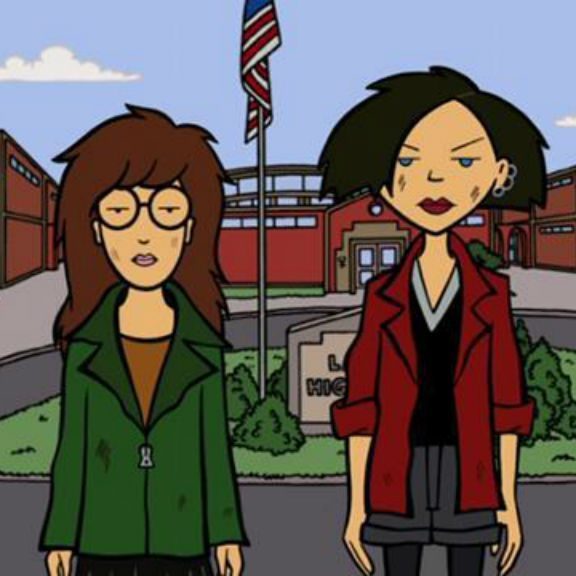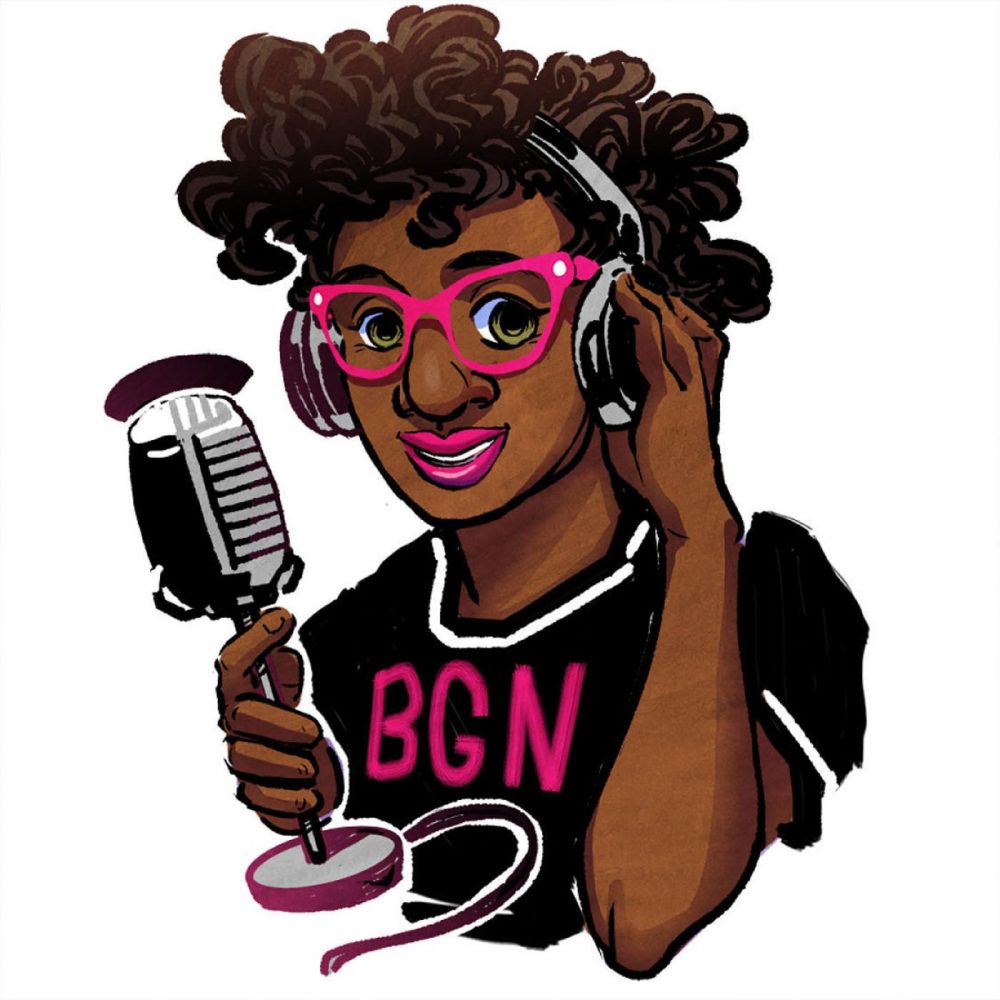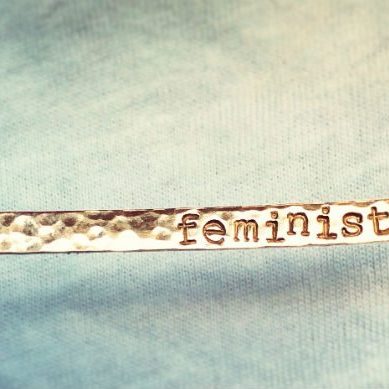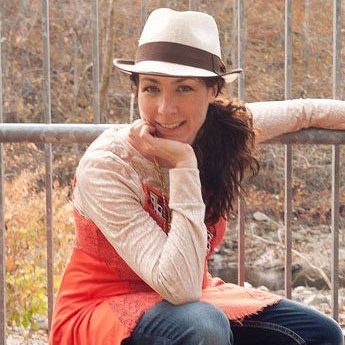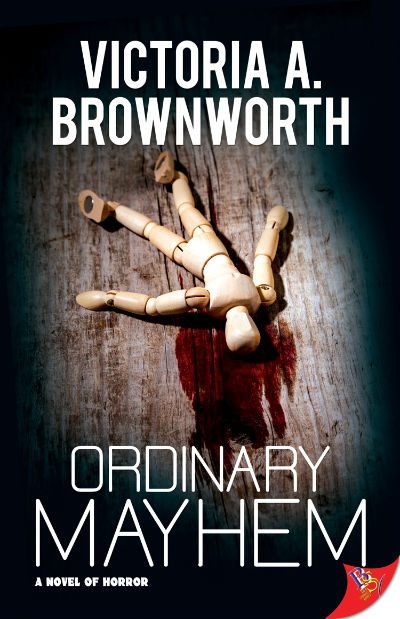
A lesbian-feminist writer uses violence to reveal the true horror of the patriarchy.
It’s Internet vernacular these days: “Pics or it didn’t happen.” But do we really want to see images of the horror endured by an estimated one billion women and girls worldwide? This is the question that award-winning journalist and Curve politics columnist Victoria A. Brownworth examines unflinchingly in her latest work of fiction — the terrifying, dark, bloody and true Ordinary Mayhem.
Brownworth, who is a lifelong feminist-lesbian writer, award-winning journalist and passionate activist reveals the dark underbelly of the patriarchy itself in this mysterious and sometimes shocking work of literature. It’s a brave and thoroughly original book by someone who has not only dedicated her life to fighting the pandemic of horrific violence against women and girls, but who has endured and survived her own fair share of it.
I caught up with Victoria Brownworth for a conversation that delves deeper into what she seeks to achieve with Ordinary Mayhem. And what we discovered, along with a number of things, is that fiction is closer to the truth than we think.
The lead character Faye Blakemore is a journalist like yourself. What parts of her are the most like you, and what parts of her are the most fictitious?
As I have told students in my writing classes over the years: Write what you know. Authenticity is something I always strive for in my fiction. We do that best when we cull from life and our own experiences. Yes, Faye and I have some things in common.
We are both journalists, though she is a photojournalist and I am a print journalist, but she had to be a photojournalist because it’s the pictures that tell this story. Faye and I share a few other things – a disjunctive childhood, being raised by nuns, fealty to women, grandfathers and fathers who were photographers.
She lives in my old walk-up apartment in New York City. We both had our first sexual experiences with other girls in a Catholic convent school and were taught to love women by nuns. The part of her that is most fictitious is her inability to get close to people in her personal life. But she has clear reasons for it, reasons I totally understand, some of which I had myself in my 20s.
What was the inspiration for this novel?
I came up with this title about 16 years ago. Originally I was going to use it for another collection of short stories. In 2012, I used it for the anthology Night Shadows: Queer Horror, which Greg Herren edited with lesbian mystery maven, J.M. Redmann. The story got a lot of attention and received Honorable Mention in Best Horror 2012, next to Stephen King, one of my fave horror writers. After it was published, I felt like I wanted to expand it. So I did.
Queer literary horror is still unusual. How have people reacted so far to Ordinary Mayhem?
The novel was nominated for a half dozen awards – it’s a finalist for the Lambda Literary Award in the most competitive category of the awards – and has already won the Independent Publisher Book Award. But people have had a resoundingly difficult time with Ordinary Mayhem, which I have to say I find pretty misogynist.
We have expectations of women writers that we do not have of male writers. We want women to write more softly. Several reviewers of lesbian fiction emailed me to tell me they just couldn’t review it. “Too violent.” “Too triggering.” “Too upsetting.”
A few people who interviewed me said the same thing. I saw reviews of the book that made it clear to me the author of the review didn’t finish the book – got stopped in the section set in Congo. But it’s a novel about violence against women and every single thing in that book is true. All but one story I covered as a journalist. All but one.
Yes, the book is about violence against women, and the role violence plays in society and in our psyches. Some of the violence you depict is so real I didn’t want to believe it. Why should a reader immerse themselves in more of what is out there in the world already.
I have spent all of my life as a writer and a journalist writing about the people no one wants to write about. No one wants to interview the woman who has jumped in front of a train and survived. I did.
No one wants to interview the mothers of children dying from cancers caused by pesticide poisoning so we can have the prettiest summer fruit on our table. I spent weeks in the Central Valley in California doing just that.
No one wants to think about what it meant for hundreds of millions of women to have their feet broken in 30 places so that they could be turned into the perfect three inch foot, because that’s what men wanted to see. I wanted to tell them.
No one wants to think about what happens on the other side of the world — in the DRC, in the CAR, in Afghanistan. I felt compelled to interview those women and report to the world on what they had experienced.
No one wants to think about lesbians being correctively raped – something I am writing about currently for my next book. So I put all those things – those very real things that I saw and experienced and that keep happening to women every day – in a book.
And it’s hard to read. But it’s essential reading, I think. And interestingly, the critics who get through the book get it.
How do we begin to investigate the epidemic of violence all around the world, especially against women, without invoking violent images? Is there still value in shock?
I actually didn’t want to shock readers. My intent was to show readers a parallel story: that women are the victims of violence every day, everywhere, and for some the magnitude of the violence is unbearable and for those like me or Faye who report on it, it changes us as much, if differently, as the victims.
Violence changes you. Some people manage to go through their whole lives protected – those are mostly white, mostly Western, mostly male, mostly straight people. But for the world’s marginalized — and all women are born into marginalization – it’s an entirely different story. In so many parts of the world we are literally hunted.
It’s understandable that we might want to look away, but if everyone looks away, the world descends into chaos. Look at what has happened when we have looked away collectively: the Holocaust, Stalin’s purges, Mao’s Cultural Revolution, the Pol Pot regime, Rwanda – so many unspeakable things.
Like the Congolese woman who has been mutilated and can’t bear it when night comes because that is when the soldiers came for her and her family. There are so many more stories I could have put in the book and didn’t.
But the reality is, we can’t write about violence without showing the violence. People must see it. We are always protecting ourselves from these realities now. Everything has a trigger warning. Except life doesn’t have a trigger warning.
Life comes for you in the night in the form of your neighbors with whom you used to have coffee and hang up the washing until they discovered you were a Jew or a Tutsi or a lesbian and they turned you in to the Gestapo or Hutu soldiers or Nigerian officials.
If a man had written this book, would it have been received differently?
I am certain it would. It’s far less violent than anything Chuck Palahniuk has written. But there is an expectation that women will write differently than men. Softer. That things will happen off the page. That we won’t show what is behind the bloodstained curtain. Things happen on the page in Ordinary Mayhem. And this is a novel of real life horror. No ghosts, no zombies, no vampires. Just men.
Faye’s grandfather is a sadist and a butcher of women—it reminded me of the unsolved Black Dahlia case. What inspired this portrayal?
In the ’90s I covered the Jeffrey Dahmer case and a case about a beautiful young gay fashion model in New York named Eigil Vesti. Dahmer was a cannibalistic serial killer. Vesti was killed by a wealthy gay New York gallery owner, Andrew Crispo and his assistant.
Those stories stayed in my head. I think once you’ve been shown before and after photos by a prosecutor or a morgue attendant – you never forget. The images remain. You have to tell the stories. The Black Dahlia case, like Jack the Ripper, has fascinated people for decades. I have read a lot about both.
I wonder about Elizabeth Short, the woman in the Black Dahlia case. How did that happen to her? I’ve often thought I would write a story about her. I may still. But some pretty superb writers have written about her already.
Are we becoming desensitized by the increased speed of the news cycle? Is digital media making us more cruel, or more connected and therefore compassionate?
We are not being made kinder and more compassionate. We actually now talk about “compassion fatigue.” How do we get fatigued by the thought of helping people who are suffering? Why do we always want to turn the page?
Yes, we are desensitized. On Twitter, I will see tales of crimes of violence against women, people of color, LGBT people. Dead Syrian and Yemeni children. Angry people from various countries, because I write for publications in the US, UK and Australia. Anti-Semitism is flaring in the UK, anti-immigrant sentiment is everywhere in the West.
The constant in every nation that we are supposed to ignore is violence against women and girls. Yet one billion women are victims of male violence and the World Health Organization asserts this is the greatest health threat for women globally.
The anonymity of social media has allowed men to be more blatantly violent in their language toward women and to stalk women online. The law hasn’t caught up with this.
This is the ordinary mayhem of which I write in the novel. When someone tweets at you that they want to throw acid in your face or hope you’ll be raped with a rusty razor dipped in bleach, you can’t help but feel fear.
Is this person in my city? Are they outside my front door? Because one day not long ago, I was outside on a bright, sunny September afternoon in my front garden and a man dragged me into a neighbor’s yard and raped me, beat me, choked me and nearly killed me.
In broad daylight. So anything can happen. And not just in some amorphous elsewhere.
In the book, at Faye’s exhibition, there are walkouts and fainting, but all her violent photos sell that night. What were you saying about us as a society?
Faye says outright what we have known since Weegee, since Diane Arbus, since we allowed photographs of point-blank executions and little girls with the clothes and skin burned off them by napalm on the front page of newspapers, in our popular magazines: We want to see it all.
We are voyeurs. We are Instagram fanatics who want to see everything there is to see and then comment on it in some pithy way. What makes Ordinary Mayhem problematic for people is I have humanized those images. It’s more than “pics or it didn’t happen.”
I have turned these victims of extreme brutality into the human beings they always were, but on whom we turned the page.
As you explain in your Author’s Note at the end of the book, Ordinary Mayhem refers to the violence that happens to women all around the world every day. It’s almost paralyzing to think about it. But what can we, as Curve readers, do about it. Where can we begin?
We can begin by being conscious. By not turning the page. By waking up to the reality of women’s lives and how much damage is being done to us all over the world. We have to educate ourselves about what is happening to women in our own communities and elsewhere.
I wrote about Aderonke Apata for Curve – she’s a Nigerian lesbian who is fighting deportation from the UK back to Nigeria where she will be either imprisoned or executed because she’s a lesbian. She was forced to provide a sex tape to the Home Office for review to “prove” she was a lesbian. Imagine. Her case is still pending.
Two young lesbians I know – Andrea Pino and Annie Elizabeth Clark – have been activists in the epidemic of rape on campus. Both are rape survivors and both can be seen in the 2015 documentary The Hunting Ground.
Andrea helped me deal with my own rape. She’s only 24. She and Annie are perfect examples of two young lesbians are changing the world around them – how brave was it of them to speak out?
There still hasn’t been a trial in the murders of Britney Cosby and Crystal Jackson, who were murdered in March 2014, allegedly by Cosby’s father, in an honor killing, because they were lesbians.
This violence against women is erased and dismissed. In the days before the Indiana Primary, Donald Trump was very proud of the endorsement of legendary Hoosiers basketball coach Bobby Knight.
But Knight is known for violence as much as for being one of the winiing-est coaches in NCAA history, with frequent incidents of choking people and throwing chairs and other violent acts. Knight also famously told Connie Chung, “I think that if rape is inevitable, relax and enjoy it.” This says so much. We can’t just shrug these things off. They are cumulative.
Most importantly, we must educate ourselves and pass it on. Corrective rape is? Honor killings? FGM? Child marriage? Acid burnings? These things aren’t just happening in some distant other place. Cosby and Jackson were killed in Texas.
So was Mollie Olgin and her girlfriend Mary Kristene Chapa was left partially paralyzed. Sakia Gunn was two weeks short of her 16th birthday when she was murdered in New Jersey for being a lesbian.
We can do this–we can be awake and present in our lives and in the lives of other women. We can start simple – like recognizing that every time we call another woman a ‘bitch’ or a ‘cunt’, we are participating in our own oppression as well as that of other women.
Not everyone is cut out for activism, but everyone can be kinder and more compassionate. Especially when we are hanging out on social media. We can read beyond the headlines, look beyond the pics. Most of all, I would urge us to listen more to those who are rarely heard.

